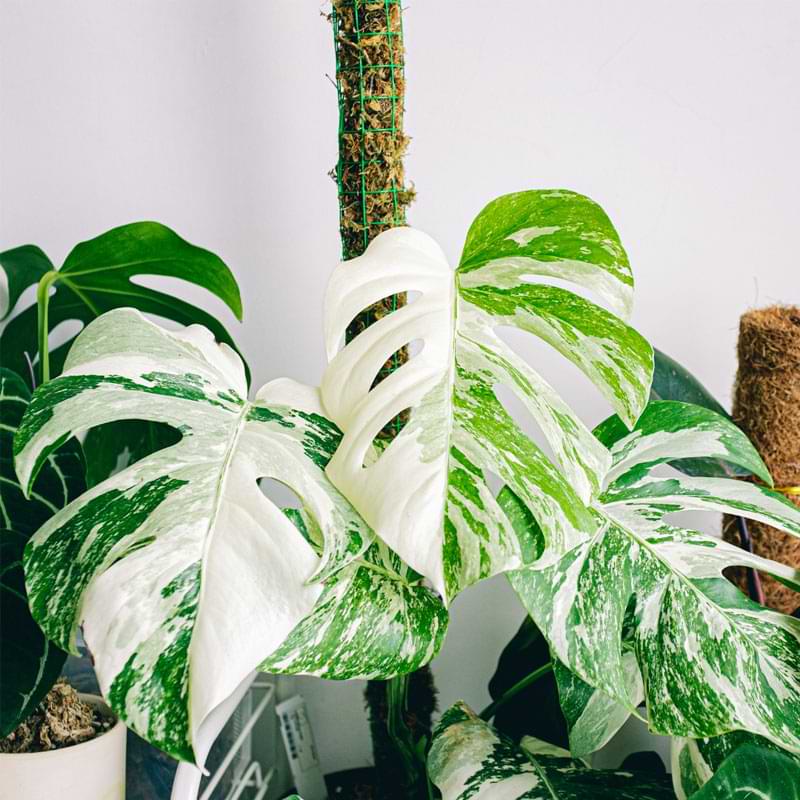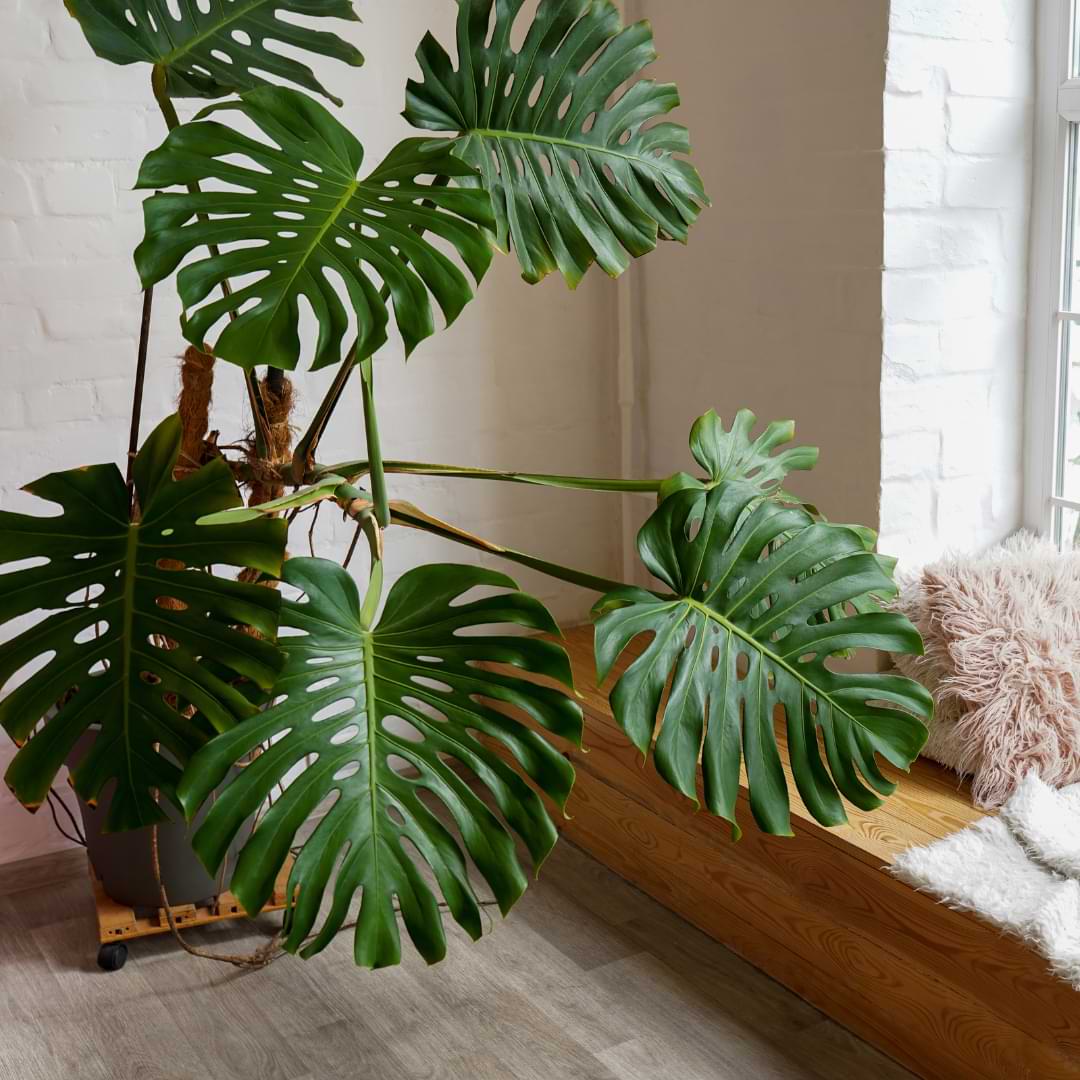Monstera plants are very popular, and it’s easy to see why! These tropical beauties are known for their large, lush leaves and striking appearance. However, as they grow taller and wider, they can become a bit unruly without proper support. That’s where staking comes in – it’s an essential technique that helps your Monstera thrive while maintaining its stunning shape.
Table of Contents
Signs Your Monstera Needs Staking
Monstera plants are known for their vining growth habits and can easily get out of hand if left unsupported. One of the main signs that your Monstera needs staking is when it starts to lean or topple over under its own weight. As the plant grows taller, its stem becomes weaker and less able to support itself.
Another sign that your Monstera needs staking is when it begins to produce aerial roots that reach out towards nearby objects in an attempt to find something sturdy to cling onto. These roots are a clear indication that your plant is searching for more support than it currently has.
If you notice the new stems of your Monstera growing outward instead of up, that’s also a sign that it needs some additional support. This happens mainly because the main stem is beginning to droop, and the added weight of new growth will start to hang down rather than grow up.
If you want your Monstera plant to maintain a specific shape or direction of growth, staking will help guide its vines in the right direction instead of letting them grow haphazardly all over the place. By providing proper support through staking, you’ll keep your Monstera happy and healthy while maintaining its stunning appearance!
Best Time To Stake a Plant
The best time to stake a Monstera is during its active growing season, which typically runs from spring through summer. During this time, the plant is actively producing new leaves and stems and will benefit from additional support as it grows.
If you wait too long to stake your Monstera, it may become too large or too heavy for a single stake to support. Conversely, if you stake the plant too early before it has had a chance to establish its root system, it may not be able to grow properly.
To determine whether your Monstera needs staking, look out for the signs above. Generally, by the time your Monstera is one or two years old, it will need to be staked. It could be much earlier depending on the variety you have and how vigorous its growth is.
Materials and Equipment Needed
To properly stake your Monstera, gather a few things first:
- A sturdy stake that is taller than your Monstera plant.
- Stem-safe ties to secure your plant to the stake
- Pruning shears
- Small gardening shovel
- Gardening gloves (recommended, but not required)
- Extra potting soil in case it is needed
While not all of these materials are necessary, it’s always good to be well prepared. Having these materials and equipment ready beforehand will ensure that you don’t have to pause midway through staking your Monstera due to lack of supplies – making for a smoother process overall!
Staking Monstera Simple Step by Step Guide
As mentioned above, staking is very important to keep your Monstera happy, healthy, and able to continue thriving, so let’s dig into how exactly to stake this beautiful plant. It’s a fairly simple process, and by following these steps, your Monstera will soon be enjoying the new stake that it gets to grow on.
Step 1: Make Space in The Soil
The first step in staking your Monstera is to make space in the soil. To do this, use a small shovel or trowel to gently dig around the base of your plant. You can also use your hands to create a small space in the soil. Be careful not to damage the roots or disturb too much soil.
Once you have cleared some space around the stem, take a moment to assess how far up the stake you will need to place it. The stake should be tall enough so that it supports both current and future growth of your Monstera.
If necessary, trim any excess foliage from the bottom of your plant before proceeding further. This will ensure that there is enough room for new growth as well as proper air circulation around the stem.
Step 2: Maneuver Stake into Position
Now that you’ve made space in the soil for the stake, it’s time to put the stake into position. To avoid damaging the roots of your plant, make sure to insert the stake at an angle towards the center of the pot. This way, you won’t hit any roots or damage them while inserting the stake.
Gently push down on the soil around your plant’s stem with one hand while using your other hand to guide and insert the stake. Be careful not to apply too much pressure or force as this could damage your Monstera’s delicate root structure.
H3 Step 3: Firm Soil Around Stem and Stake
Now that the stake is in position, all your need to do is firm up the soil around the stem and stake. This step ensures that your Monstera plant is securely held in place.
Gently push down on the soil with your fingers or a small gardening tool, and be sure to avoid pressing too hard as this can damage the roots of your Monstera.
Step 4: Guide Vines and Aerial Roots Upwards Around Stake
Once you have secured the stake into position, it’s time to guide the vines and aerial roots upwards around the stake. This is a crucial step as it ensures that your Monstera plant grows in an upright manner, providing ample support as it continues to grow.
As you guide the vines upwards, make sure that they are evenly spaced around the stake. As for aerial roots, these will also need guidance along with the vines. Use gentle pressure to wrap them around the stake while taking care not to damage their delicate structure.
Take note of any leaves covering up potential aerial roots and move them out of harm’s way so that they can easily find their way up towards your support system. Do not force your plants too hard; instead, give them enough time to latch onto surrounding structures naturally without causing undue stress on its stems or leaves.
Step 5: Secure Vines in Place
Now that you have guided the vines and aerial roots upwards around the stake, it’s time to secure them in place. This step ensures that your Monstera plant remains upright without leaning towards one side.
To secure the vines, use soft garden ties and make sure to tie them gently around the vines. Start at the base of the stake and wrap it gently around both vine and stake. Make sure not to tie too tightly as this can damage or restrict growth.
Continue securing each vine a few inches apart until all are tied up. It’s important to leave room for new growth so avoid wrapping too tightly. If you notice any leaves drooping on certain vines, adjust their position by loosening the twine or garden tie slightly.
Remember to check regularly for any signs of damage from tight binds or excessive pressure on stems so that you can make adjustments accordingly. By securing your Monstera vines properly, you’ll ensure healthy growth patterns and prevent potential harm caused by broken stems or underdeveloped roots.
Step 6: Moisten The Stake
Moistening the stake is an important step in staking your Monstera. This helps to keep the stake moist and encourages aerial roots to grow towards it. Aerial roots are essential for supporting the plant as it grows taller.
To moisten the stake, you can use a spray bottle or a damp cloth. If using a spray bottle, make sure to mist the entire surface of the stake evenly. If using a damp cloth, gently wipe down all sides of the stake. It’s important not to overwater your Monstera when watering the stake. Overwatering can lead to root rot, stem rot, and other issues that may harm your plant’s growth.
Once the aerial roots find their way around the stake, you can stop misting the stake, as they will naturally hold on to it after they find it.

Tips for Training a Monstera to Climb
Training your Monstera to climb is important for the plant’s overall health, and will allow your beautiful Monstera to keep growing taller and fuller. Some of the best ways to have a Monstera that climbs its stake effortlessly are:
- Start training your Monstera as soon as possible. The younger the plant is when you start, the faster it will begin to naturally grow up the stake.
- When attaching your Monstera to the stake, use a gentle tie that will not harm the stem of the plant. Do not tie it to the stake too tightly, either, as this could potentially cause stem rot where the Monstera stem touches the stake.
- Rotate the plant often – about a whole turn every week – a quarter turn every other day – while it’s getting used to growing along the stake. This ensures that each side of the plant gets a good amount of light while it is getting used to growing along the stake.
- Keep the stake moist. When the plant notices there is moisture nearby, it will send the aerial roots over to it. This doesn’t happen quickly, it is a very gradual process, so be patient. Once the aerial roots find the stake and successfully start attaching to it, you can remove your ties and let the plant support itself on the stake.
- Find a stake you like that is expandable. This is important as the plant grows bigger and taller, because you don’t want to have to remove your Monstera from its current stake to give it a larger one, or you may have to start from square one to train the plant up the stake again!
- When pruning or trimming your Monstera, always use clean, sterilized pruning shears, and only trim your plant a little bit at a time. This will prevent your plant from going into shock, and will ultimately keep you plant happier.
Staking Larger Monstera Plants
Staking large Monstera plants can be a bit more challenging than smaller ones because of their size and weight. However, it is still doable with the right approach.
First, you will need to consider using a larger stake that can support the plant’s weight and height. The stake should be at least two-thirds the height of the plant to provide enough support. You may also need to use multiple stakes for added stability.
When positioning the stake, make sure it is placed far enough away from the stem to avoid damaging any roots or foliage. It should also be inserted deep into the soil to ensure stability.
Next, carefully tie or wrap vines around the stake, ensuring they are not too tight as this could damage them. As Monstera plants grow quickly, you will need to check regularly if they need repositioning or adjusting on your chosen staking method. As you can see, it’s very similar to staking a smaller sized Monstera.
You may also want to recruit the help of a friend or family member when staking your large Monstera, just to ensure you don’t accidentally bend a stem or crush a leaf in the process. Staking your large Monstera does require more care than a smaller, more manageable plant, but with some extra attention it is still very easy to do.
Verdict: How To Stake Monstera
With proper staking and training techniques, you can create beautiful displays of foliage as your Monstera climbs towards new heights. Don’t be afraid to experiment with different types of supports or methods until you find what works best for your specific plant, and don’t be afraid to try new methods if one way of staking your plant isn’t working for you.
More Monstera Resources
Learn more about caring for these amazing plants!





